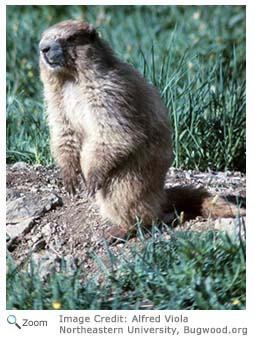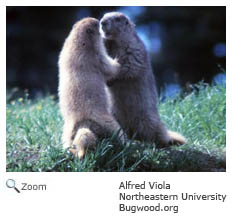Olympic Marmot - Marmota olympus |
||||||||
Description
Range
| HabitatThe Olympic marmot is found on rocky mountain slopes and hillsides and in alpine meadows. DietThe Olympic marmot eats a variety of grasses, flowers, and green plants including sedges, lupines, mosses, lilies and heather blossoms. Occasionally, it eats insects. It hibernates from September through May. After it comes out of hibernation, roots make up a large part of its diet until new plants bloom. Life CycleThe Olympic marmot mates a couple of weeks after it comes out of hibernation. About a month after mating, the female gives birth to four to five babies. The young stay with their family group for at least two years. Female Olympic marmots usually have a litter every other year. Behavior
|
|||||||


 The Olympic marmot is only found in the Olympic Mountains in Washington state.
The Olympic marmot is only found in the Olympic Mountains in Washington state.

